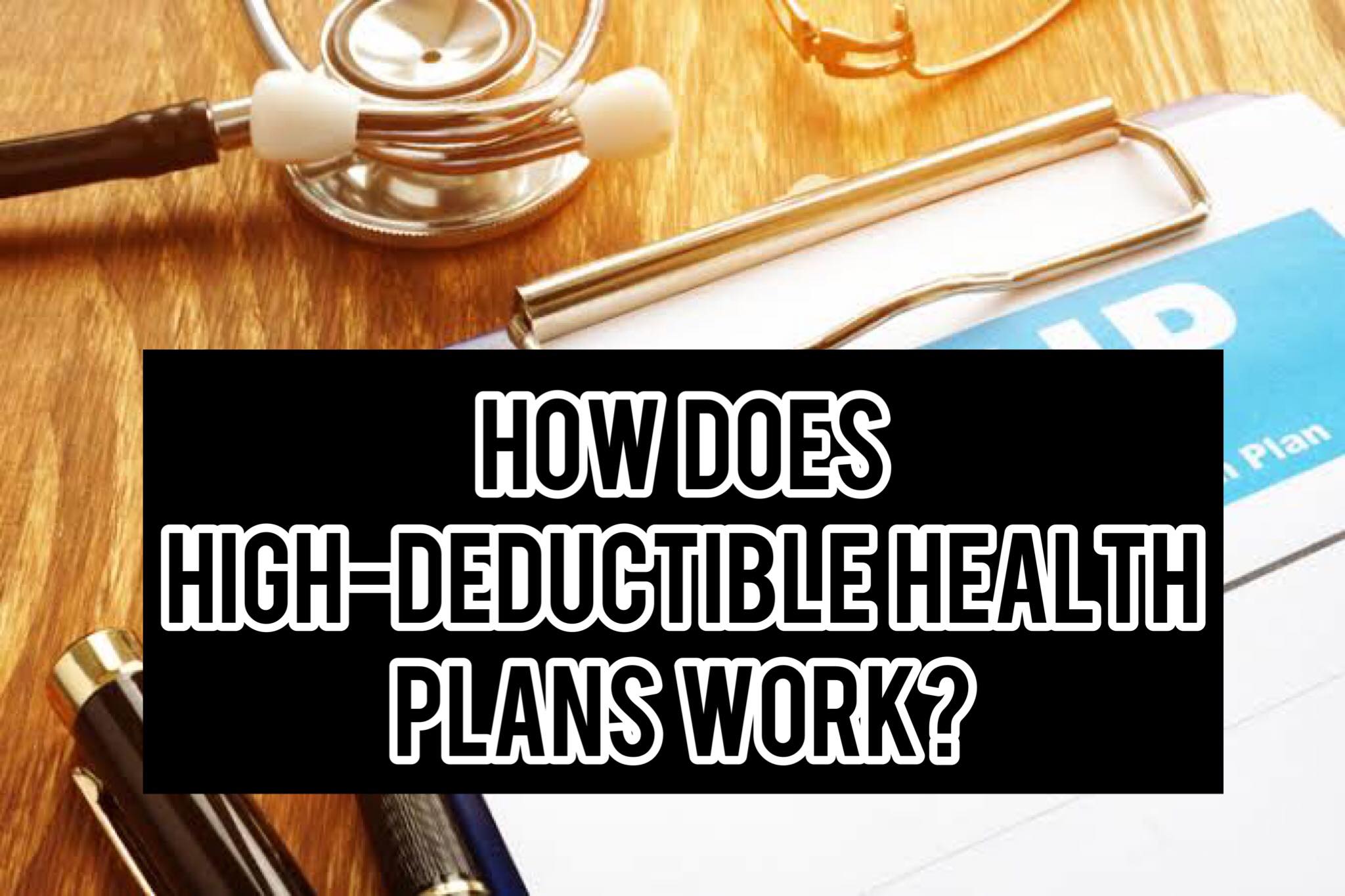Are you interested in opening a health savings account and saving money on your monthly health insurance premiums? If so, you must have a health plan with a large deductible (HDHP). Let’s talk about the features of these plans, their advantages and disadvantages, and the circumstances under which you might choose to use or forego an HDHP.
What Is a High-Deductible Health Plan?
An HDHP is a health insurance plan that meets IRS requirements for 2023 and has a deductible of at least $1,500 for individual coverage or $3,000 for family coverage. The deductible is the sum that you are responsible for paying out-of-pocket before your insurance kicks in. Also, the family plan’s out-of-pocket maximum cannot exceed $15,000 and the individual plan’s out-of-pocket maximum cannot exceed $7,500. The most you’ll have to pay annually for medical costs that are covered by your insurance plan is known as the out-of-pocket maximum.
Benefits of High-Deductible Health Plans
The premiums for an HDHP will often be lower than those for a comparable health insurance plan with a lower deductible. It makes sense to buy an HDHP and pay as little as possible in premiums if you don’t anticipate having many medical bills in the next year. You have a high possibility of saving money this way—possibly several hundred dollars or more over the course of the year.
Just make sure you have enough money to cover the out-of-pocket maximum in the worst situation. If you can’t, you risk accruing medical debt, which will make it more difficult to pay your costs due to the increased interest. If the HDHP’s out-of-pocket maximum is more than you can afford, a health insurance plan with higher premiums but a lower out-of-pocket maximum might be a better option.
The choices above illustrate a scenario in which picking the HDHP is unquestionably advantageous. If your annual medical costs are at least as high as your deductible, either plan will result in you paying $4,500 of your own money in premiums and deductibles. But, if you choose the HDHP, you are only obligated to pay $1,500 in premiums unless you are absolutely certain of the amount of your future medical costs.
Furthermore, holding the HDHP enables you to fund a health savings account. If you had $3,000 in medical costs and you fall into the federal tax level of 24 percent, you might use your HSA to pay for them with pre-tax funds. The same $3,000 in medical bills could cost you almost $4,000 if you paid them with post-tax money. If your company provides a flexible spending account (FSA), you may use it to pay $2,550 of your $3,000 in medical expenses if you choose the lower deductible plan (the non-HDHP). The non-HDHP would therefore provide you with comparable tax savings.
Even this simplified example is not exactly straightforward. The majority of real-life situations don’t make it obvious whether you should choose a high-deductible or low-deductible plan, in a similar manner. You must perform the calculations for your particular situation, taking into consideration your anticipated annual medical costs as well as the premiums, deductibles, and out-of-pocket maximums for the various plans.
High-Deductible Health Plans and Preventive Care
Because of the restrictions of the Affordable Care Act, if you choose the high-deductible plan, you will still have 100% coverage for preventative care from in-network providers before you reach your deductible. You are not required to make any copayments or coinsurance for any of the numerous services that fall within this category.
Also Read: Best Digital Insurance Companies
HSA Eligibility
In addition to often reduced rates, as already mentioned, having an HDHP also gives you the opportunity to fund a health savings account. Because HSA contributions are made using pre-tax money, using your HSA to pay for medical expenses can result in significant savings. For instance, if your federal tax rate is 24 percent, a $100 medical bill will actually only cost you $76. To be eligible to fund an HSA and to be eligible for any employer contributions to your HSA, you must have an HDHP.
In fact, combining an HDHP plus an HSA may also provide you with “free” money in the form of optional workplace payments to your HSA. Also, you are not required to always use your HDHP in order to benefit from an HSA in subsequent years. Donations are carried over from year to year, and you can invest them to increase their value as well. Even if you don’t have an HDHP going forward, you can still use funds that have already been deposited into your HSA to cover medical costs.
Disadvantages of High-Deductible Health Plans
The main disadvantage of selecting an HDHP is the possibility of having significant annual out-of-pocket costs. As previously mentioned, this implies that in 2023, participants in HDHP plans could incur out-of-pocket expenses of up to $7,500 for individual coverage and $15,000 for family coverage.
Because you may not be used to paying such large out-of-pocket expenses, skipping doctor visits may become a problem if you decide to enroll in an HDHP. If choosing an HDHP may result in you avoiding doctors, surgeries, or medicines in order to make immediate financial savings, reconsider your decision. The long-term costs of ignoring medical conditions could be higher, and your health will also be in danger.
High-Deductible Health Plans and You
Your stage of life and the anticipated medical costs will determine whether or not having an HDHP makes sense. You should specifically compare the advantages of lower monthly premiums with the danger of accruing bigger deductibles and out-of-pocket costs, which can pile up and overwhelm some customers.
You’ll probably save a lot of money by selecting an HDHP because the premiums are lower if you’re young and healthy, rarely visit the doctor, and don’t use prescription medication. Given the high cost of giving birth at a hospital and the likelihood that your out-of-pocket payments would exceed your high out-of-pocket maximum, an HDHP may not be the best option for expecting parents. Even though the initial premiums are greater, it can be more cost-effective to choose a plan with lower deductibles and out-of-pocket expenses in that situation.
A HDHP might also not be wise if you have small children because they routinely see the doctor, which can quickly rack up deductibles. An HDHP might make more sense if your kids are older and as long as you and they are both healthy. On the other hand, a plan with a lower deductible may be advantageous if any of the people covered by your plan have a chronic disease that requires continuing care. Last but not least, if you’re older, you statistically have a larger likelihood of having bigger medical bills, therefore you might not want to gamble on an HDHP. Yet, if you’re still in good condition and don’t have any cause to believe that you’ll need to pay high medical expenses, an HDHP may be appropriate for your situation despite your age.
Whether an HDHP will save you money always depends on the specifics of the plans that are offered to you and your anticipated annual medical costs. Just because your circumstances fall into a given group doesn’t mean that an HDHP is inherently a better or worse deal than an insurance policy with a lesser deductible. Always make the calculations for your own situation.
How Do I Know If I Have a High-Deductible Health Plan?
You have a high-deductible health plan if you are eligible for a health savings account (HSA). Compared to a standard health plan, this sort of insurance offers a lower premium and a higher deductible. One of the prerequisites for a health savings account is having an HDHP (HSA).
Your health insurance plan qualifies as an HDHP in 2023 if it includes a minimum deductible of $1,500 for individual coverage and $3,000 for family coverage, with a cap on out-of-pocket expenses of $7,500 ($15,000 per family).
What Is a High-Deductible Health Plan’s Main Drawback?
You can be responsible for paying a lot of money out of pocket for your medical care. Before your plan begins to pay for covered expenses, you must first achieve the deductible specified in the contract. The plan would cover routine doctor visits and well-baby checkups as well as other preventive medical care, but an accident or unforeseen illness may necessitate paying medical providers thousands of dollars.
What Is a High-Deductible Health Plan’s Main Benefit?
The high-deductible plan allows you access to a tax-advantaged savings vehicle, the health savings account, if you are generally healthy and want to save for upcoming medical bills. Many people, especially those who are getting close to retirement, may find the HSA to be advantageous because they can use the funds for retirement medical expenses.
Conclusion
With an HDHP, you can save money by paying lower premiums and benefiting from an HSA tax deduction for qualified medical expenses. When enrolling in an HDHP, it’s crucial to project your medical expenses for the upcoming year to see how much you could have to pay out of pocket. Even while a plan with a lower deductible typically has higher premiums and disallows HSAs, there are several circumstances in which it will actually save you money. Also, you can use an FSA to gain tax savings on your medical expenses with a lower-deductible plan if your company allows it.

Sage is a financial/consumer journalist and senior editor, personal finance, of TrendsHQ. EXPERTISE: Personal Finance, Careers, Jobs, Scholarships, and Entertainment.
